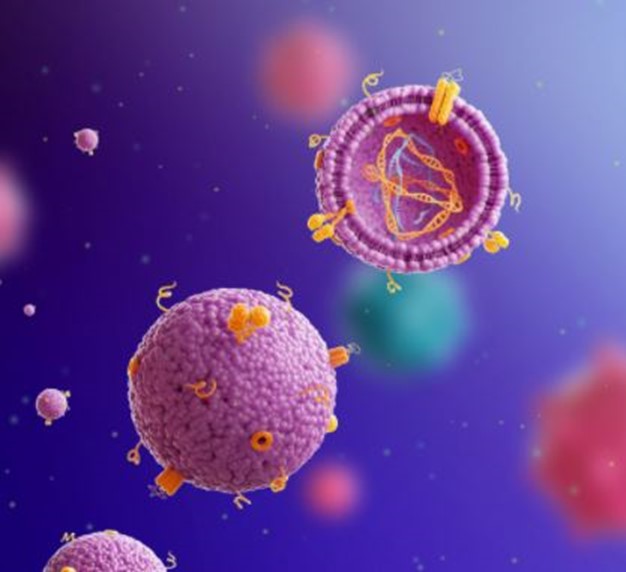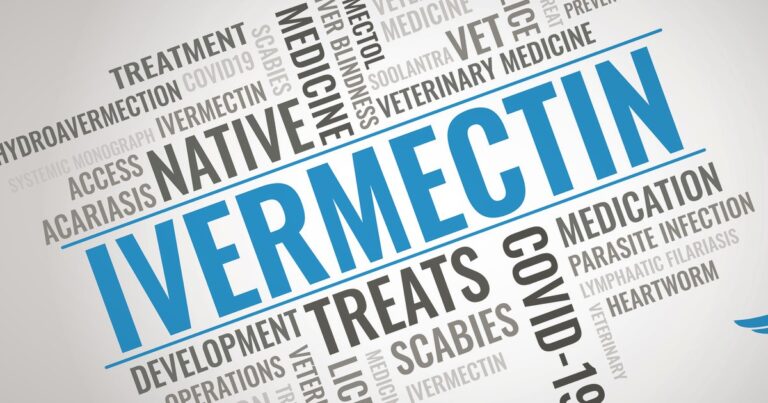When a cancer patient has multiple tumors, it is common for the others to become active as soon as one tumor awakens and becomes painful. Mechanisms related to general inflammation and immune system activity can explain this. However, this synchronization led me to believe that tumors may be able to communicate with one another.
Can tumors communicate with one another? This was a question that had been on my mind for quite some time.
Yes, the answer is YES. Tumors, like all cells in our bodies, can communicate with one another, and a major group of messengers is known as Exosomes.

Exosomes are small bubbles (20 to 150 nanometers in size) made of a fat membrane and containing proteins, DNA, and RNA. Yes, the structure and behavior of this sound like a virus, but it is not a virus because it is created by our own body for a different purpose. Exosomes are essentially small bubbles that circulate throughout the body. They are produced within the cells and released into the extracellular space and bloodstream, where they can affect cell function and behavior.
As a result, they are tiny messengers that transport cargo (proteins and genetic information) between neighboring and distant cells. They deliver messages within the human body at the Because of exosomes, cells do not require physical contact in order to communicate. This is why, communication of cells via exosomes is a fundamental process in the human body (and not only).
These exosomes are used for cell-to-cell communication by both normal and cancer cells (i.e. intercellular communication).
The Essential Role of Exosomes in Cancer
While exosomes and related mechanisms have been studied for nearly three decades, the role of exosomes in cancer is a relatively new topic in science. The majority of the literature on this topic has been published in the last 5-10 years. This is why, despite the importance of exosomes being highlighted by the 2013 Nobel Prize in Physiology or Medicine, this topic has yet to be addressed in the clinical world.
The effect of exosomes from different cells varies greatly depending on their origin cell. Exosomes released by tumor cells have been shown to play an important role in angiogenesis and, perhaps more importantly, metastasis. They aid cancer cells in communicating with fibroblasts and immune cells within the tumor microenvironment, mediating immunosuppression via a variety of mechanisms, including the promotion of regulatory T-cell expansion. It should be noted, however, that tumor-promoting exosomes are produced by cells other than tumor cells. Exosomes secreted by macrophages, for example, can promote breast cancer invasion and metastasis.
It has been demonstrated that tumor-generated exosomes (carrying cancer-specific RNAs and proteins) are released into the bloodstream and travel to distantly targeted organs, preparing the local environment before the arrival of the first cancer cells. Tumor-derived factors and chemokines that attract tumor cells are used to stimulate fibroblasts at distant sites.
It has been reported that exosomes can even transfer mutations from one cell to another, which I find extremely intriguing. Exosomes have also been found to contain GLUT1 and PKM2, influencing the metabolism of target cells. Recipient cells expressed high levels of GLUT1 and PKM2, indicating the presence of glycolysis, or the Warburg effect. Consider the implications of this knowledge: tumors produce viral-like particles with the proper size and structure to avoid detection by the immune system, and they can transfer mutations and influence the metabolism of target cells. A recent study (2020) published in Nature magazine demonstrated how scientists were able to transfer a disease phenotype from a human to a mouse using exosomes.
As a result, tumors can have a significant impact on the environment both locally and at a distance. As a result, researchers have concluded that crosstalk between primary cancer cells and microenvironmental cells is an important step in cancer metastasis.
There is a large amount of recent literature that can be discussed here, but the conclusion is that tumors must communicate in order to progress and spread to other locations (metastasis). Exosomes are a major “language” that tumors use. Inhibiting exosome production may thus help to stop or slow the progression of cancer, depending on how effective we are in doing so.
Exosome inhibition is also expected to improve the efficacy of immunotherapies, as there is sufficient evidence that tumor-derived exosomes are precursors of immune suppression.
One mechanism for tumor resistance to chemotherapy is the release of exosomes, which encapsulate chemo drugs and transport them outside of the tumor cell. It has been demonstrated that inhibiting this process with a repurposed drug increases chemo effectiveness. As a result, exosomes are responsible for one of the key mechanisms by which tumors resist chemotherapy.
Finally, exosomes may be important in tumor-induced cachexia. Cancer cachexia is a metabolic syndrome characterized by rapid loss of skeletal muscle mass, either alone or in combination with fat loss. Indeed, it has been demonstrated that exosomes released by breast cancer promote tumor progression by triggering cancer-associated cachexia.
Finally, exosome inhibition makes perfect sense for cancer patients because exosomes play an important role in:
- tumor progression
- metastasis
- cachexia
- chemo-resistance
- resistance to immunotherapies
The next question along this line is what drugs and supplements are available to help us modulate and down-regulate tumor exosome production. Such modulators could then be considered as part of a broader treatment strategy or drug cocktail used to combat specific cancers.
How to Inhibit Exosome-based Communication
There are two major ways to inhibit exosome production:
- We can inhibit the building blocks required by the cell to generate Exosomes
- We can inhibit the intra-cellular mechanisms responsible for the Exosomes production and their release from the cell
Inhibiting the building blocks means preventing intracellular cholesterol production. Indeed, lipid rafts are critical to membrane budding, and cholesterol plays an important role. A comprehensive strategy for inhibiting cholesterol production that may be useful in addressing the downregulation of exosome production. Therefore, drugs such as Statins and food supplements such as Citrus Bergamot may help on this line. Indeed, Simvastatin exhibited the ability to inhibit the secretion of exosome.
The inhibition of intra-cellular mechanisms responsible for the Exosomes production and release from the cell, can be addressed by various drugs and supplements:
Available Drugs
- Imipramine – an anti-depressant drug – inhibitor of the activity on acid sphingomyelinase (aSMase), an enzymes that facilitates the conversion of sphingomyelin to ceramide, a process relevant for exosomes formation and release as it increases membrane fluidity
- Indomethacin/Indometacin – non-steroidal anti-inflammatory drugs (NSAID) family used to decrease prostaglandins production during inflammation, due to its ability to non-selectively inhibit cyclooxygenase I and II – downregulate transcription of the ABCA3 transporter, an intracellular protein involved in lipid transport.
- Ketoconazole – an antifungal drug
- Sulfisoxazole – an oral antibacterial drug – a specific inhibitor of the biogenesis and secretion of exosomes from cancer cells
- Ketotifen – antihistamine drug, has the ability to block exosome release. Ketotifen was reported to block calcium influx into cells. It is shown that exosome release is regulated by calcium-dependent mechanisms. Therefore, the mechanism of ketotifen inhibiting exosome release might due to its calcium channel blocking effect.
- microenvironmental pH of tumour cells is an essential factor for exosome traffic. This means that all those drugs and supplements altering internal and external pH may be effective against exosomes. Example of drugs that we already discussed in this context are Lansoprazole, Amiloride, Acetozolamide and many more. Indeed it has been showed that proton pump inhibitors can be effective in lowering exosomes release and as a result increasing effectiveness of chemotherapy
Available Supplements:
- Pantethine – a pantothenic acid (vitamin B5) derivate found online as a food supplement – pantethine has been shown to inhibit (by 80%) cholesterol synthesis in cultured skin fibroblasts (GM0043), as well as total fatty acids synthesis.
- Cannabidiol (CBD) – extract from Cannabis sativa available online, can block exosome release. CBD can block exosome release by 50% at 5 µM and it can selectively inhibit the release exosomes from cancer cell lines (e.g. prostate, breast, liver cancers, glioblastoma).
Conclusion
In conclusion, there are two aspects that are extremely important here:
- Exosomes produced by the tumors are major facilitators for tumor progression and their activity can be reduced with common drugs and supplements
- When looking at how to inhibit exosomes products we find out that major strategies and drugs we already discussed as very relevant in the battle against cancer are also leading to exosome inhibition:
- cholesterol strategy
- ph strategy
- calcium modulation
Could exosomes be the reason why so many cancer-fighting strategies and drugs have been shown to be effective? That is yet to be determined. What is clear is that this is at least one additional perspective we could use to look at cancer, learn, and improve our chances of a successful treatment outcome. By doing so, we will be well ahead of the majority, as this is a field of science that has only recently begun to receive significant attention from the scientific community in terms of oncology.





